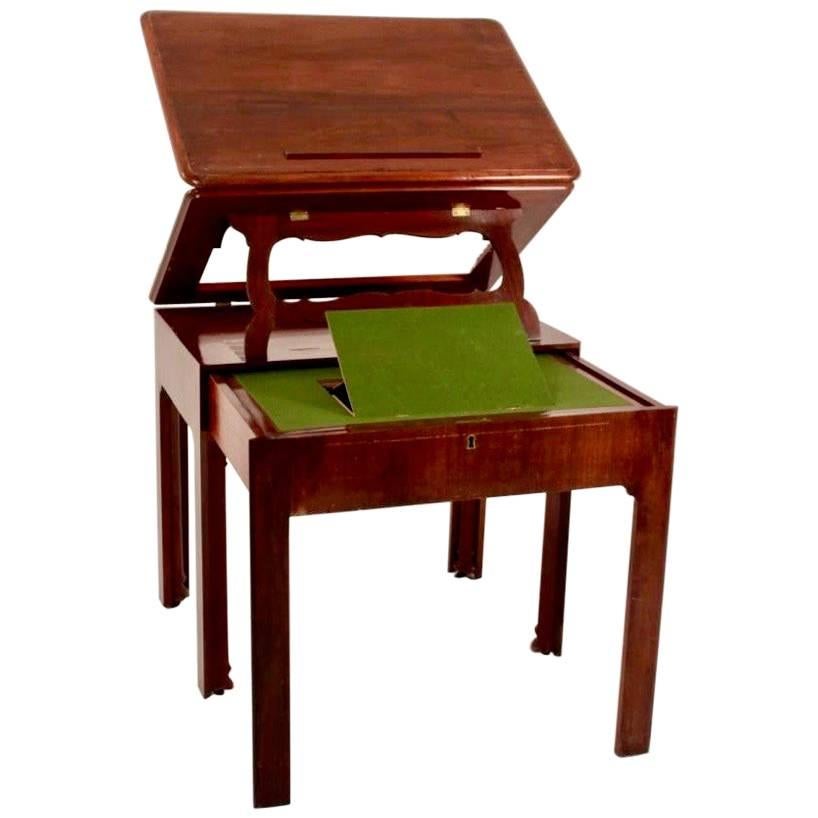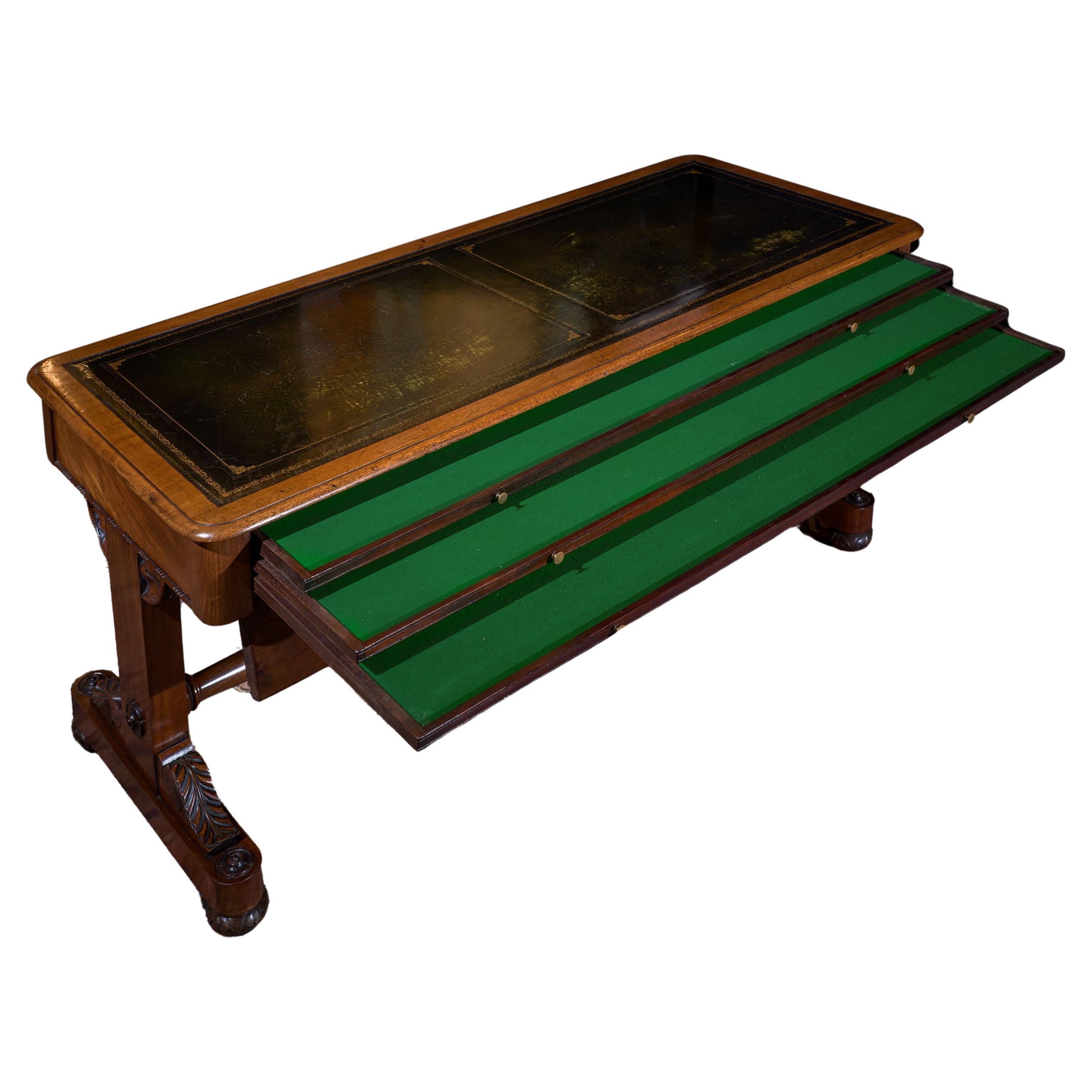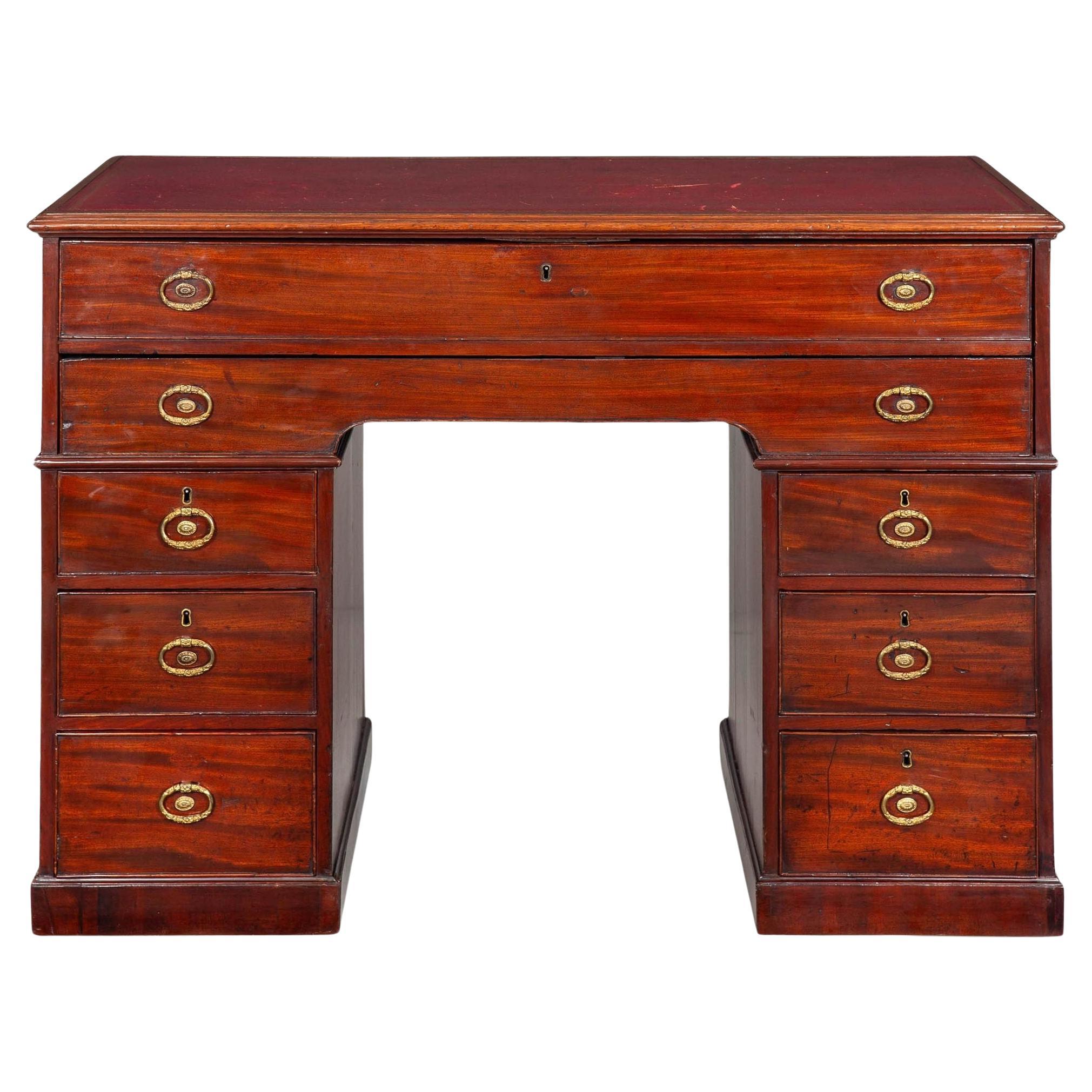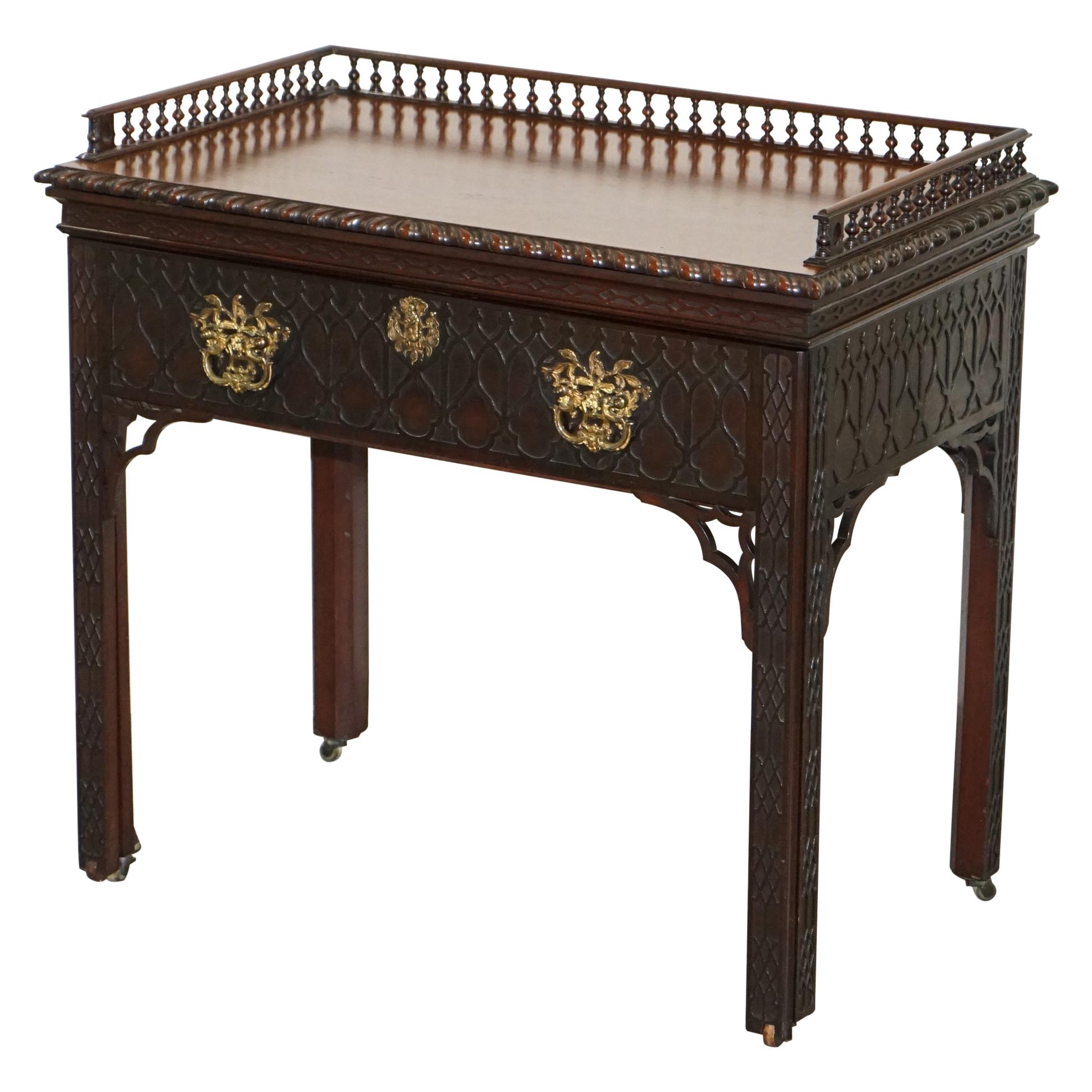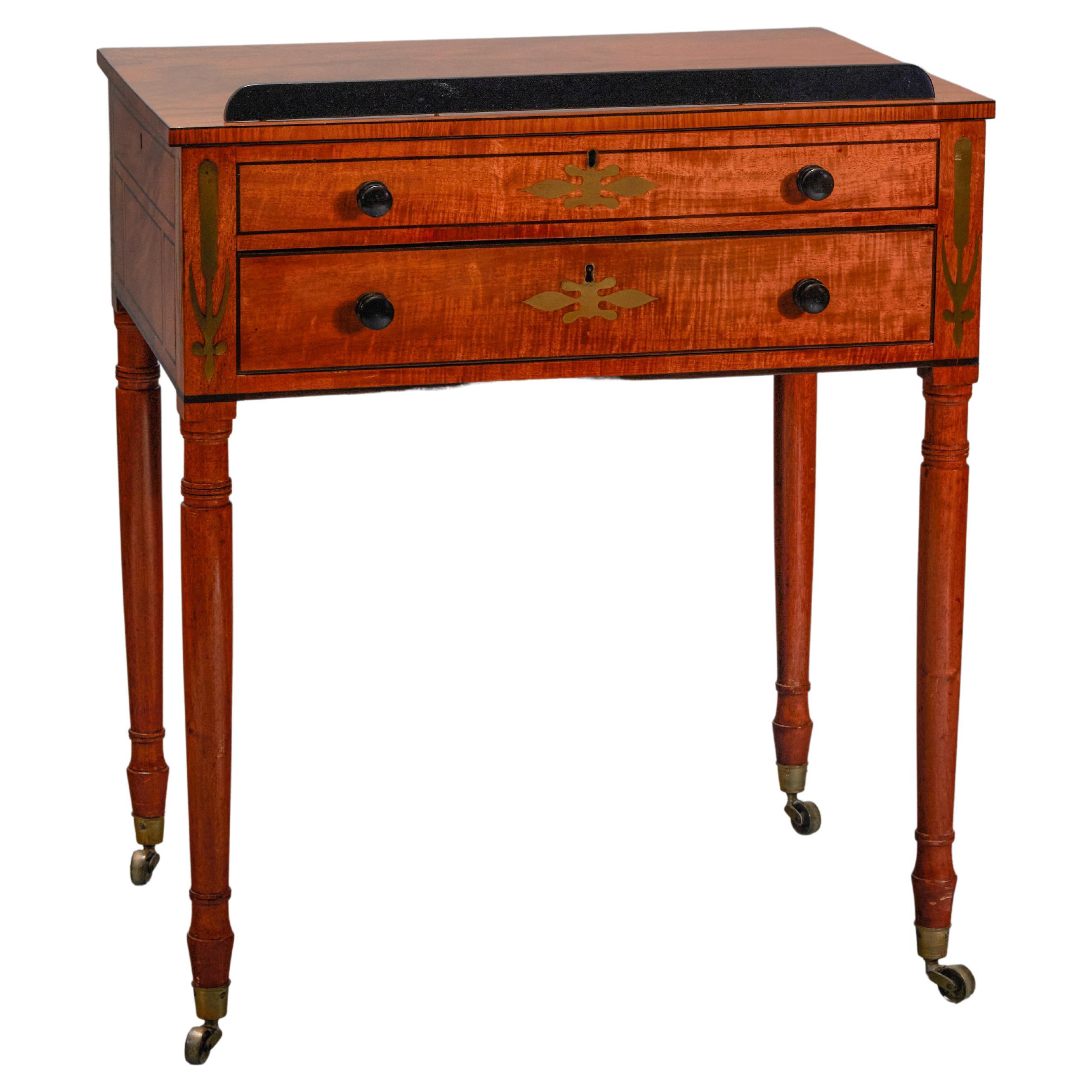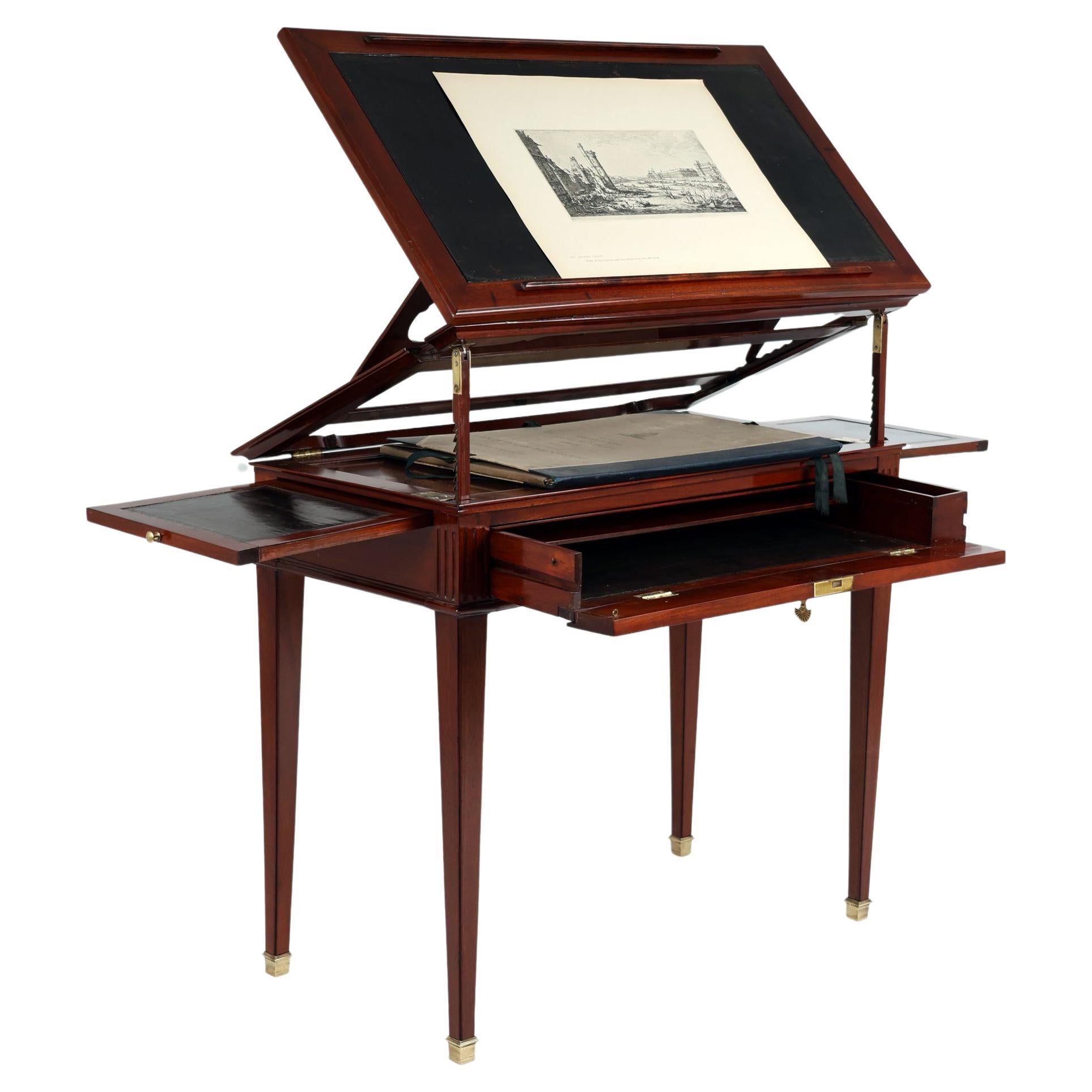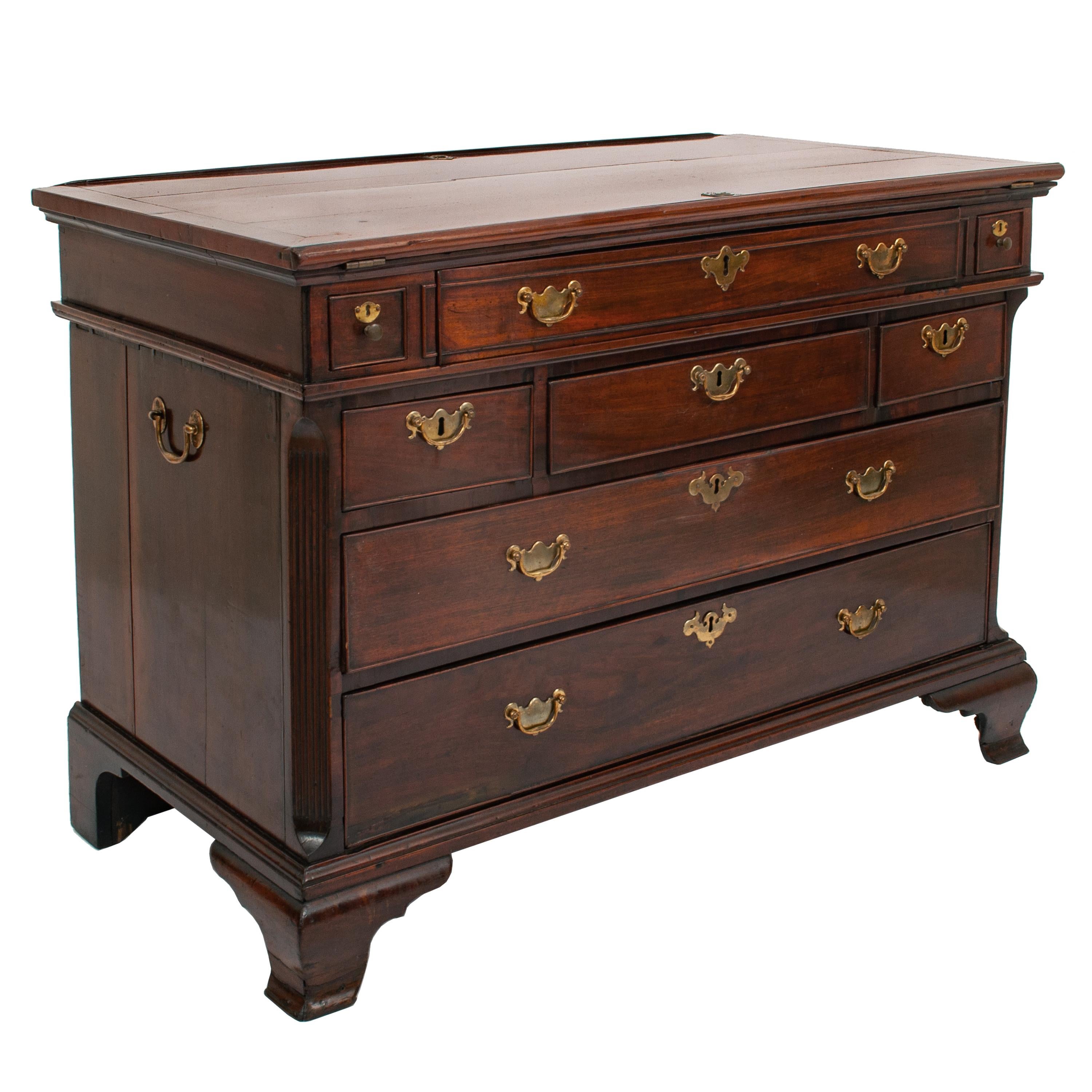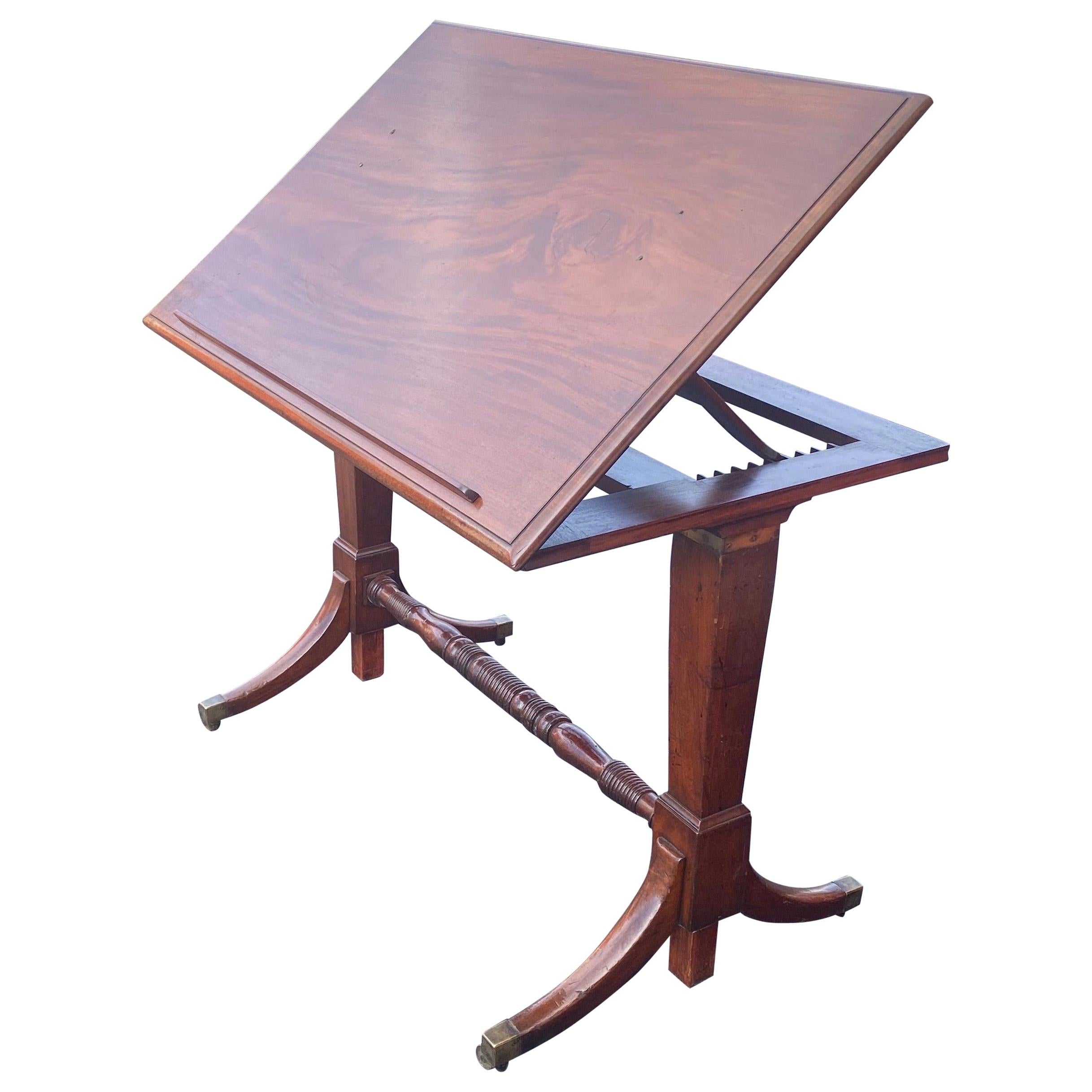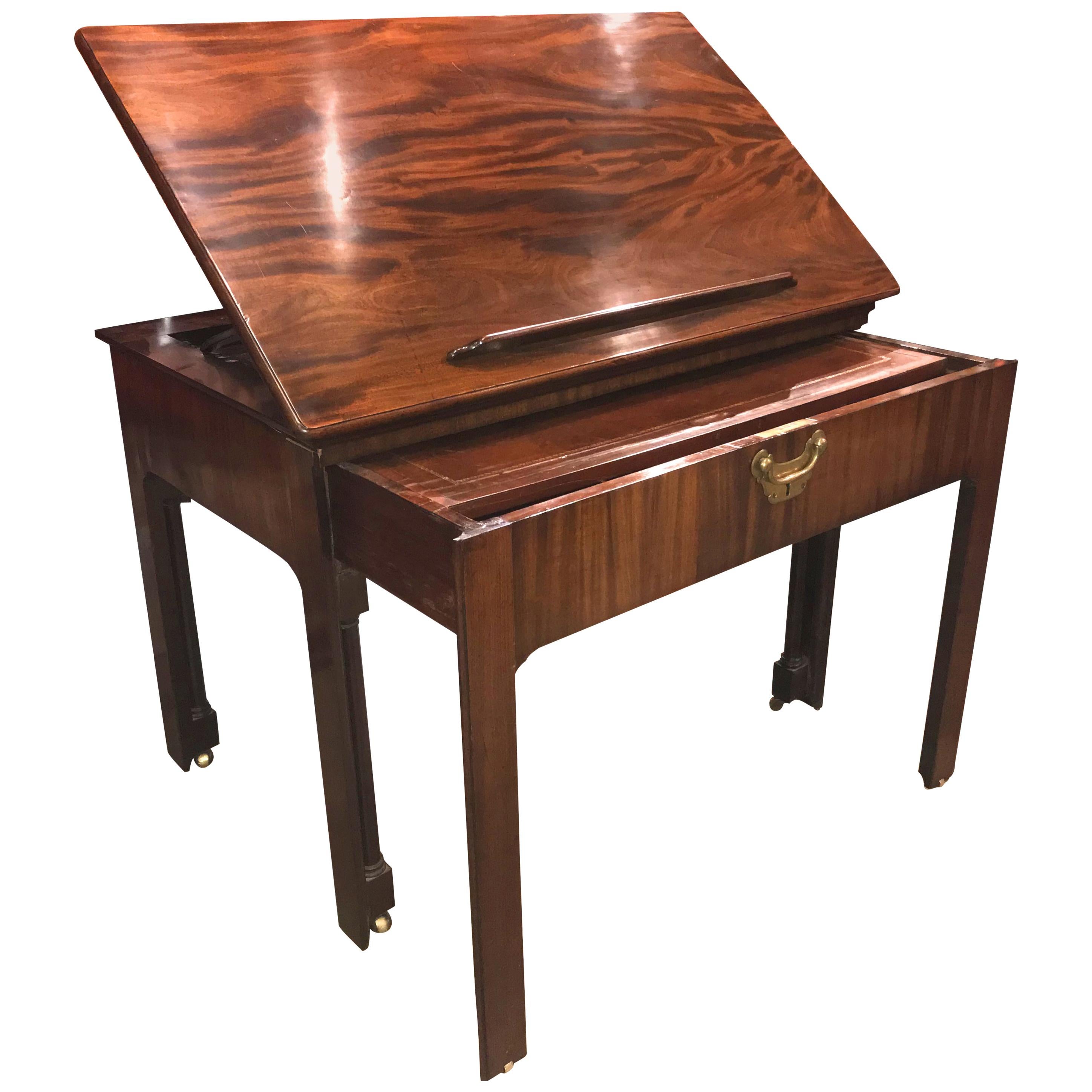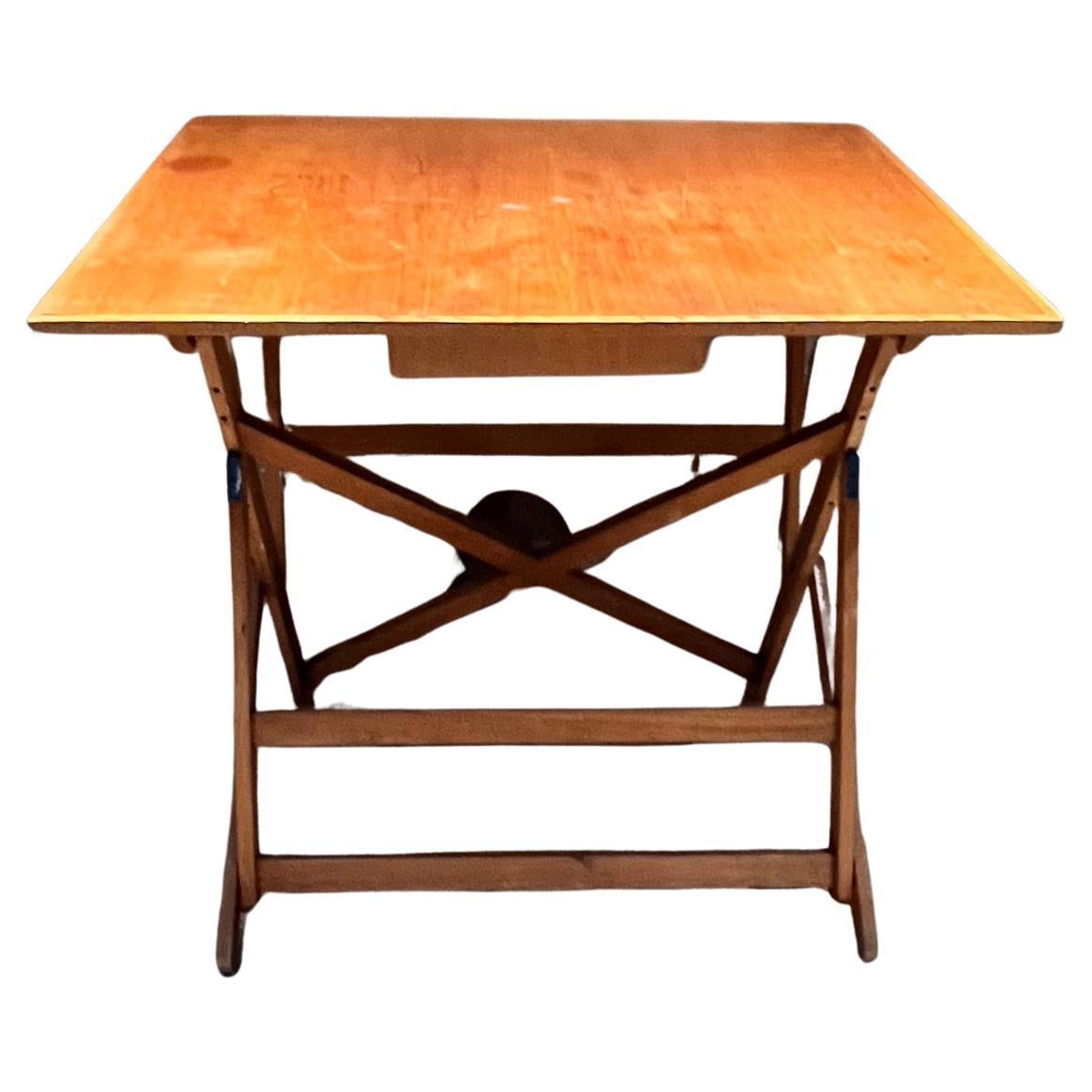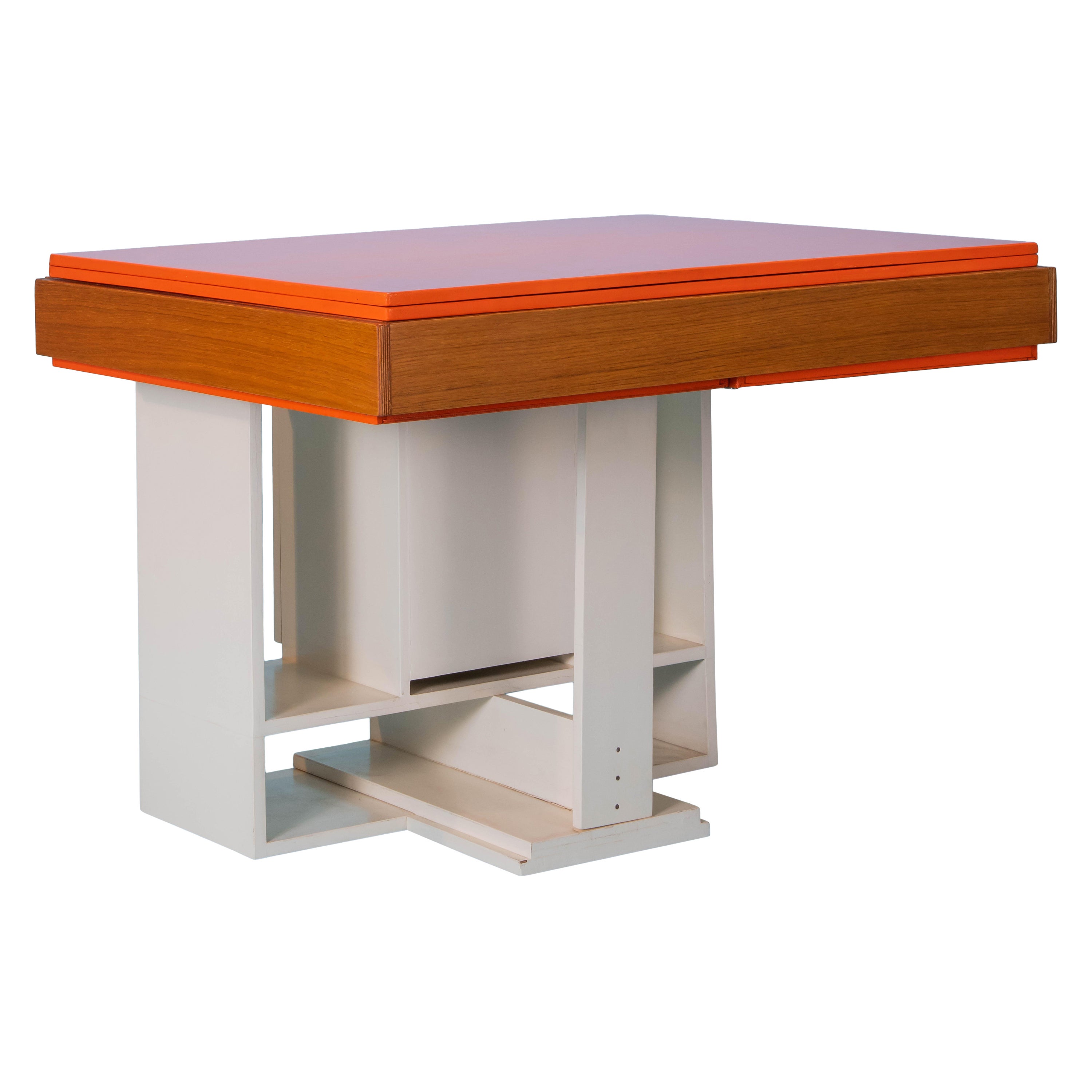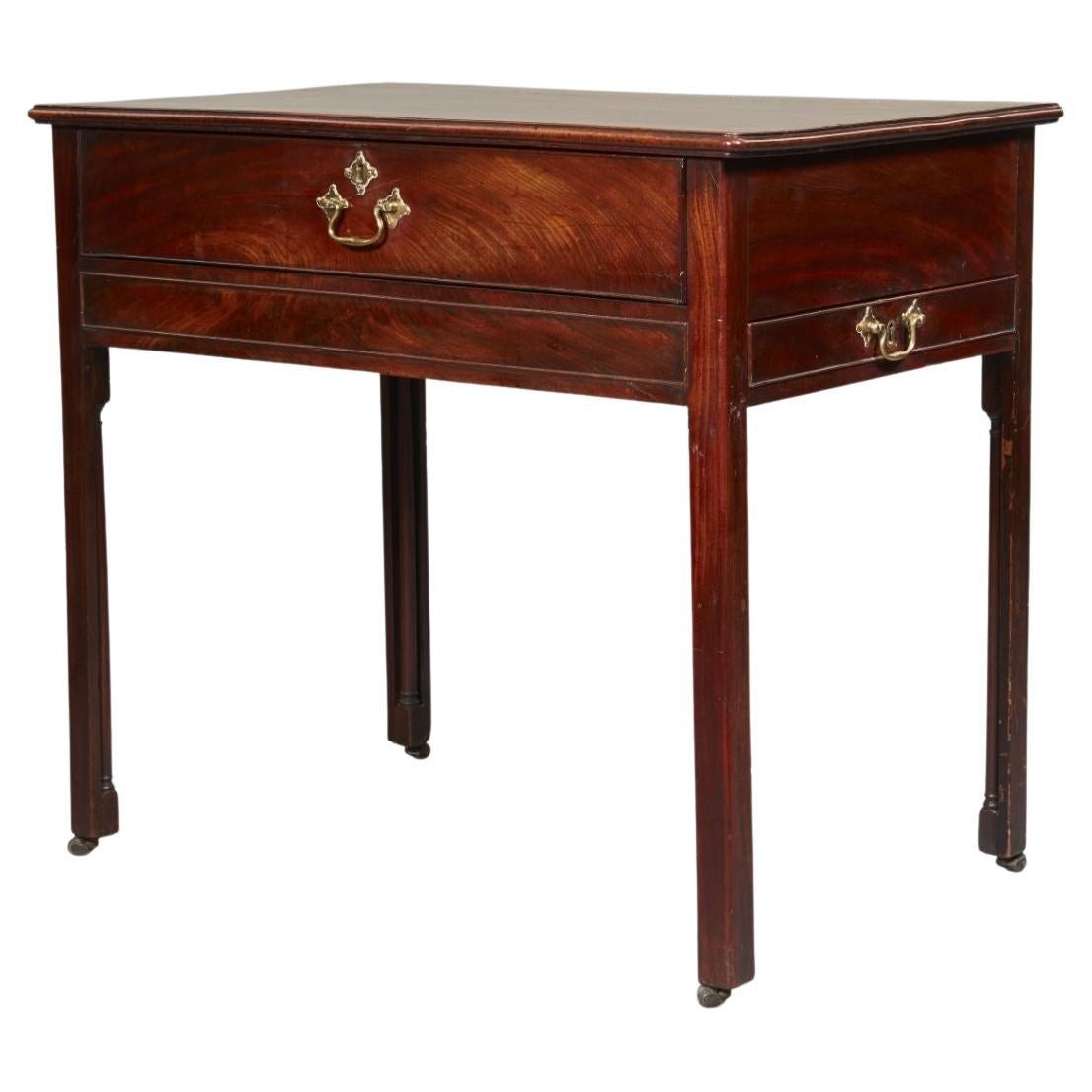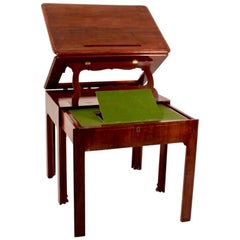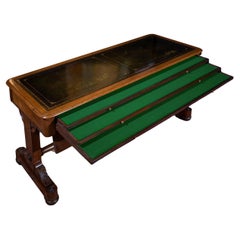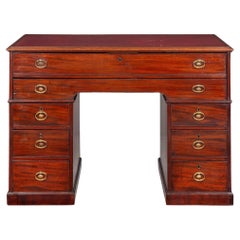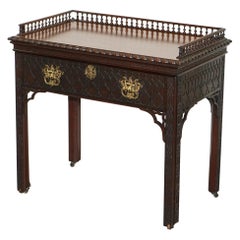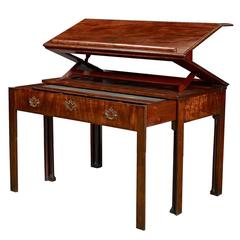
George III Mahogany Architect’s Table
View Similar Items
1 of 2
George III Mahogany Architect’s Table
About the Item
- Dimensions:Height: 32.29 in (82 cm)Width: 48.04 in (122 cm)Depth: 24.22 in (61.5 cm)
- Style:Chippendale (In the Style Of)
- Place of Origin:
- Period:1780-1789
- Date of Manufacture:circa 1780
- Condition:
- Seller Location:Banksmeadow, AU
- Reference Number:Seller: CS330081stDibs: LU126024638013
Authenticity Guarantee
In the unlikely event there’s an issue with an item’s authenticity, contact us within 1 year for a full refund. DetailsMoney-Back Guarantee
If your item is not as described, is damaged in transit, or does not arrive, contact us within 7 days for a full refund. Details24-Hour Cancellation
You have a 24-hour grace period in which to reconsider your purchase, with no questions asked.Vetted Professional Sellers
Our world-class sellers must adhere to strict standards for service and quality, maintaining the integrity of our listings.Price-Match Guarantee
If you find that a seller listed the same item for a lower price elsewhere, we’ll match it.Trusted Global Delivery
Our best-in-class carrier network provides specialized shipping options worldwide, including custom delivery.You May Also Like
Period George III Chippendale Mahogany Architect's Table or Desk
Located in Essex, MA
Period Georgian architect's table or desk
--Metamorphic
--Cuban mahogany
--Writing surfaces and racheted book supports
--A very well construction ver...
Category
Antique Late 18th Century English Georgian Desks and Writing Tables
Materials
Mahogany
Architect's Plan Table in Mahogany
Located in London, GB
A rare William IV architect's plan table in mahogany, the top inset with gilt tooled leather above a hinged false drawer front revealing three baize lined trays, on carved bun feet a...
Category
Antique 1830s English William IV Desks and Writing Tables
Materials
Mahogany
George III Mahogany Architect’s Desk attr. Gillows of Lancaster circa 1790
Located in Shippensburg, PA
GEORGE III MAHOGANY ARCHITECT'S DESK IN MANNER OF GILLOWS OF LANCASTER
England, circa 1790 with alphabetized rent drawers interior unmarked
Item # 405KYH28Z
This remarkable architect's pedestal desk was almost certainly crafted by Gillows of Lancaster, London circa 1790. It features a rectangular top inlaid with maroon gilt-tooled leather bordered by a molded edge. Below this is situated a full-width frieze drawer which is decorated to appear as two false drawers over pedestals containing three graduated drawers on either side of an open kneehole. The desk stands on a molded plinth base fitted with casters.
The top drawer reveals a sliding gilt-tooled leather writing surface with a central panel that can be lifted on ratchet supports to hold and display documents. This surface slides back to uncover a lower compartment with an open storage area, flanked by three lidded compartments labeled alphabetically within oval reserves. The back of the desk is designed for a tidy appearance, making it suitable for placement in the center of a room, featuring two full-width faux drawers above faux cabinet doors in the pedestals.
While the present example is not marked by Gillows, it is almost without question a product of their workshops and is firmly attributed to their design books. The alphabet inlaid drawers were inspired by designs popularized by Thomas Shearer’s The Cabinet Maker’s London Book of Prices (1788-1803). These were employed in designs published by Gillows, such as the 'bureau writing-table' with a double-ratcheted top made for the Earl of Shrewsbury in 1789 and a writing-table from 1794 (see Gillow Furniture Designs 1760-1800, L. Boynton, ed., 1995, pl. 24 and 41). A similar design appears in the firm’s 1798 Estimate Sketch Book (p.1481), preserved in the Westminster City Library. The drawer design is further seen on pedestal desks stamped by Gillows, including the library table provided by the firm in 1778 to Denton Hall (see C. Gilbert, The Life and Works of Thomas Chippendale, London, 1978, vol.II, p.246, pl.449).
Gillows produced many variations of this desk style, including those with ratcheting tops for standing use, enclosed kneehole designs, various types of pulls, and subtle dimensional adjustments. Examples can be seen well into the George IV period and the influence of this form on later desks by Gillows can be seen as the tastes changed into the second half of the nineteenth century.
Sir Walter Scott acquired a similar desk from Gillows for his Edinburgh house in Castle Street in 1810, later moving it to his study at Abbotsford in 1826. In a letter to J.B. Morritt of Rokeby Hall, Yorkshire, dated May 1810, Scott wrote: ‘You know I fell in love with your Library table and now the The Lady [The Lady of the Lake] has put crowns into my purse I would willingly treat myself unto the like...’ On 9 August, Scott wrote again to Morritt: 'I must not omit to tell you that Gillows table has arrived and gives great satisfaction. Everyone that sees it likes it so much I dare say I shall have some commissions to send him. His bill did not much exceed yours being about £30 ready money’. The Gillow archives from 1810 record: ‘pack for W.Scott Esq., Castle Street, Edinburgh, case containing mahogany bureau writing table Double Elevating tops cupboard in center complete writing drawers’. (See C. Wainwright, The Romantic Interior, Fig 162 & 163).
A few open-market examples of nearly identical desks...
Category
Antique 18th Century English George III Desks and Writing Tables
Materials
Leather, Mahogany
Original Thomas Chippendale George III Hardwood Architect's Work Desk Table
By Thomas Chippendale
Located in West Sussex, Pulborough
We are delighted to offer for sale this very rare original Thomas Chippendale George III circa 1780 Architects writing table or desk
A v...
Category
Antique 1780s English George III Desks and Writing Tables
Materials
Hardwood
Regency Architect's Table
Located in Hudson, NY
Mahogany table with ebony accents and inlaid brass. Top is hinged with wooden supports to elevate writing surface into standing position. Interior storage includes one drawer on the ...
Category
Antique Early 19th Century English Desks and Writing Tables
Materials
Wood
$10,500
Late 18th Century Mahogany Veneered Architect's Table, Stamped
Located in Stahnsdorf, DE
Late 18th Century Mahogany Veneered Architect's Table, Stamped
France, 1790-1800
A late 18th century Directoire mahogany architect's table also called as table Tronchin...
Category
Antique 1790s French Directoire Desks and Writing Tables
Materials
Mahogany
